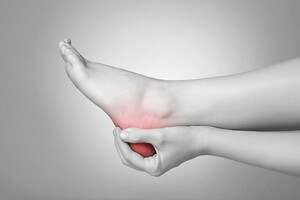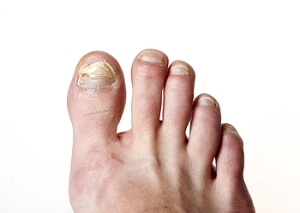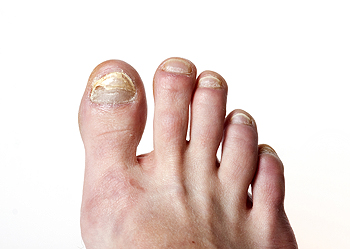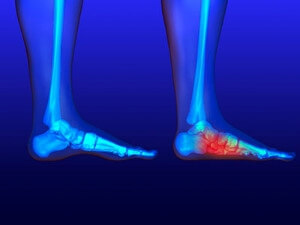Super User
What Are the Different Types of Broken Ankles?
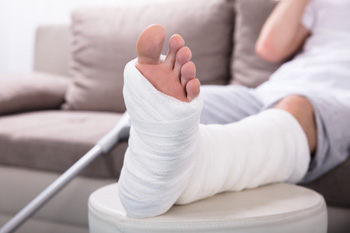 Ankle fractures can be classified into two different types based on which bone is broken. A tibial fracture, in which the shin bone breaks, is usually the result of a direct injury such as falling down the stairs. Tibial fractures often take longer to heal and recover from. A fibula fracture occurs when the thinner bone that runs along the outside of the lower leg is broken. The fibula may fracture in response to an impact to the leg or ankle. Repetitive impacts can lead to a stress fracture of the fibula, in which tiny cracks appear in the fibula bone. In severe fibula fractures, the bone may become displaced, causing a visible deformity. Regardless of which bone is injured, ankle fractures usually cause swelling, pain, bruising, tenderness, and difficulty walking or bearing weight on the affected ankle. If you have a broken ankle, please seek the care of a podiatrist.
Ankle fractures can be classified into two different types based on which bone is broken. A tibial fracture, in which the shin bone breaks, is usually the result of a direct injury such as falling down the stairs. Tibial fractures often take longer to heal and recover from. A fibula fracture occurs when the thinner bone that runs along the outside of the lower leg is broken. The fibula may fracture in response to an impact to the leg or ankle. Repetitive impacts can lead to a stress fracture of the fibula, in which tiny cracks appear in the fibula bone. In severe fibula fractures, the bone may become displaced, causing a visible deformity. Regardless of which bone is injured, ankle fractures usually cause swelling, pain, bruising, tenderness, and difficulty walking or bearing weight on the affected ankle. If you have a broken ankle, please seek the care of a podiatrist.
Broken ankles need immediate treatment. If you are seeking treatment, contact one of our podiatrists from New Tampa Foot & Ankle. Our doctors can provide the care you need to keep you pain-free and on your feet.
Broken Ankles
A broken ankle is experienced when a person fractures their tibia or fibula in the lower leg and ankle area. Both of these bones are attached at the bottom of the leg and combine to form what we know to be our ankle.
When a physician is referring to a break of the ankle, he or she is usually referring to a break in the area where the tibia and fibula are joined to create our ankle joint. Ankles are more prone to fractures because the ankle is an area that suffers a lot of pressure and stress. There are some obvious signs when a person experiences a fractured ankle, and the following symptoms may be present.
Symptoms of a Fractured Ankle
- Excessive pain when the area is touched or when any pressure is placed on the ankle
- Swelling around the area
- Bruising of the area
- Area appears to be deformed
If you suspect an ankle fracture, it is recommended to seek treatment as soon as possible. The sooner you have your podiatrist diagnose the fracture, the quicker you’ll be on the way towards recovery.
If you have any questions, please feel free to contact our office located in Wesley Chapel, FL . We offer the newest diagnostic and treatment technologies for all your foot care needs.
All About Broken Ankles
Broken ankles are a serious injury that can lead to an inability to walk, function, and also cause a significant amount of pain. A broken ankle is a break in one of the three bones in your body that connect at the ankle joint: the tibia, the fibula, and the talus. The tibia and fibula are your two primary leg bones that connect at the knee, which sit directly upon the talus bone. This is protected by a fibrous membrane that allows for movement in the ankle joint. A broken ankle is usually caused by the foot rolling under or twisting too far, causing one of these three bones to snap.
A broken ankle is different from an ankle sprain, which occurs when the ankle ligaments are ripped or torn but no bones have been broken. A sprain can still be very severe, causing bruising in the foot and an inability to hold your own weight, much like a broken ankle would. If you’re unable to stand, and suspect that you have a broken ankle, the first thing to do would be to get an immediate X-ray to determine the severity of the break.
A common cause of broken ankles is when the ankle is rolled over with enough pressure to break the bones. This usually happens during exercise, sports, or other physical activity. Another common cause is a fall or jump from a tall height.
One immediate treatment for pain relief is elevating the foot above your head to reduce blood flow to the injured area. You can also apply ice packs to your ankle to help reduce swelling, redness, inflammation, and pain. After these initial steps, getting a cast and staying off your feet as much as possible will aid in the recovery of the broken ankle. The less movement and stress the ankle has to endure, the more complete it will heal. A doctor can determine if surgery is needed in order to heal correctly. In these cases, an operation may be the only option to ensure the ability to walk properly again, followed by physical therapy and rehabilitation.
It is highly important to determine if surgery is needed early on, because a broken ankle can become much more severe than you realize. If not professionally treated, the broken ankle will inhibit your walking, daily functioning, and produce a large amount of pain. Treating your broken ankle early on will help prevent further damage to it.
When Will My Plantar Fasciitis Go Away?
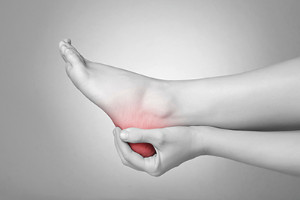 Plantar fasciitis, a common overuse injury that results in inflammation of the ligament that runs along the bottom of the foot, can be a very painful and persistent ailment. The most common symptom of plantar fasciitis is intense heel pain that is usually at its worst upon taking your first steps in the morning. Without treatment, plantar fasciitis can worsen over time and can cause foot pain that interferes with daily activities. Full recovery from plantar fasciitis can take between 6 to 8 weeks, and in some cases may take several months. Treatments for this condition are typically conservative and involve resting and icing the foot, modifying your activities and footwear, and taking anti-inflammatory medications to reduce pain. If you have plantar fasciitis, please seek the care of a podiatrist.
Plantar fasciitis, a common overuse injury that results in inflammation of the ligament that runs along the bottom of the foot, can be a very painful and persistent ailment. The most common symptom of plantar fasciitis is intense heel pain that is usually at its worst upon taking your first steps in the morning. Without treatment, plantar fasciitis can worsen over time and can cause foot pain that interferes with daily activities. Full recovery from plantar fasciitis can take between 6 to 8 weeks, and in some cases may take several months. Treatments for this condition are typically conservative and involve resting and icing the foot, modifying your activities and footwear, and taking anti-inflammatory medications to reduce pain. If you have plantar fasciitis, please seek the care of a podiatrist.
Plantar fasciitis can be very painful and inconvenient. If you are experiencing heel pain or symptoms of plantar fasciitis, contact one of our podiatrists from New Tampa Foot & Ankle. Our doctors can provide the care you need to keep you pain-free and on your feet.
What Is Plantar Fasciitis?
Plantar fasciitis is the inflammation of the thick band of tissue that runs along the bottom of your foot, known as the plantar fascia, and causes mild to severe heel pain.
What Causes Plantar Fasciitis?
- Excessive running
- Non-supportive shoes
- Overpronation
- Repeated stretching and tearing of the plantar fascia
How Can It Be Treated?
- Conservative measures – anti-inflammatories, ice packs, stretching exercises, physical therapy, orthotic devices
- Shockwave therapy – sound waves are sent to the affected area to facilitate healing and are usually used for chronic cases of plantar fasciitis
- Surgery – usually only used as a last resort when all else fails. The plantar fascia can be surgically detached from the heel
While very treatable, plantar fasciitis is definitely not something that should be ignored. Especially in severe cases, speaking to your doctor right away is highly recommended to avoid complications and severe heel pain. Your podiatrist can work with you to provide the appropriate treatment options tailored to your condition.
If you have any questions please feel free to contact our office located in Wesley Chapel, FL . We offer the newest diagnostic and treatment technologies for all your foot and ankle needs.
Are Orthotics and Insoles the Same Thing?
For healthy individuals, over-the-counter (OTC) foam or gel insoles or rigid inserts may ease some minor foot discomfort. However, custom orthotics may be needed for those who suffer from more serious foot disorders or diseases, those who have pain in the knees or back, or those that are experiencing a gait or posture issue. Getting a custom medical orthotic starts with a thorough physical exam by a podiatrist who will then be able to diagnose the nature and cause of the pain. If it is determined that a custom orthotic will help in the treatment of your particular condition, a 3D digital scan or mold of your foot will be created and a custom orthotic will be produced just for you. If OTC insoles have not yielded relief, or you are experiencing any foot, ankle, or leg pain, contact a podiatrist today.
If you are having discomfort in your feet and would like to try orthotics, contact one of our podiatrists from New Tampa Foot & Ankle. Our doctors can provide the care you need to keep you pain-free and on your feet.
What Are Orthotics?
Orthotics are inserts you can place into your shoes to help with a variety of foot problems such as flat feet or foot pain. Orthotics provide relief and comfort for minor foot and heel pain but can’t correct serious biomechanical problems in your feet.
Over-the-Counter Inserts
Orthotics come in a wide variety of over-the-counter inserts that are used to treat foot pain, heel pain, and minor problems. For example, arch supports can be inserted into your shoes to help correct overarched or flat feet, while gel insoles are often used because they provide comfort and relief from foot and heel pain by alleviating pressure.
Prescription Orthotics
If over-the-counter inserts don’t work for you or if you have a more severe foot concern, it is possible to have your podiatrist prescribe custom orthotics. These high-quality inserts are designed to treat problems such as abnormal motion, plantar fasciitis, and severe forms of heel pain. They can even be used to help patients suffering from diabetes by treating foot ulcers and painful calluses and are usually molded to your feet individually, which allows them to provide full support and comfort.
If you are experiencing minor to severe foot or heel pain, it’s recommended to speak with your podiatrist about the possibilities of using orthotics. A podiatrist can determine which type of orthotic is right for you and allow you to take the first steps towards being pain-free.
If you have any questions please contact our office located in Wesley Chapel, FL . We offer the newest diagnostic and treatment technologies for all your foot and ankle needs.
Ankle Foot Orthotics for Athletes
Ankle foot orthotics are shoe inserts that offer support to control the placement and movement of the ankle, correct deformities, and compensate for weakness. These inserts are used to stabilize the foot and ankle and provide toe clearance during the swing phase of gate.
Athletes often suffer foot problems because their feet are not being supported within the shoe. Ankle and foot orthotics are custom made inserts that alleviate stress on the foot. However custom orthotics should be prescribed by a podiatrist who specializes in customized footwear and orthotics design. These inserts are used by athletes for different reasons. Runners use orthotics to absorb shock at heel contact and to set up the forefoot for push-off. Basketball players wear them to control their forefeet while jumping and running.
The two main types of orthotics are over-the-counter orthotics and custom-made orthotics. To be eligible for custom orthotics, an examination of the foot and ankle will need to be completed. Afterward, both the foot and ankle will need to be casted and fitted for the proper orthotic. When the fitting process is complete, adjustments can be made to make sure everything fits perfectly.
Over the counter orthotics tend to be more popular than custom fit ones. Athletes who have less severe aches and pains in the foot, ankle or lower back area can use the over-the-counter version of orthotics. Unfortunately, over-the-counter orthotics tend to not work in treating severe injuries or ailments. Whenever you suspect you may need an ankle foot orthotic, you should consult with your podiatrist to determine which type of orthotic is right for you.
What Caused My Toenail to Become Discolored?
Toenail fungus, or onychomycosis, is an infection of one or more nails. While it is typically caused by dermatophyte, yeasts, molds and other fungi can also cause onychomycosis. Whatever fungal organisms are to blame for it, toenail fungus can be uncomfortable, unattractive, and even odorous. Elderly people are more susceptible to onychomycosis because of their weaker immune systems, poorer circulation, and brittle nails—which can crack and allow easier access to harmful fungi. If you notice one or more of your nails has become thickened, distorted, discolored with yellow or white streaks or spots, or has darkened, you may have toenail fungus. Make an appointment right away with a podiatrist who can provide early and effective treatment to clear up the infection and stop it from worsening or spreading.
For more information about treatment, contact one of our podiatrists of New Tampa Foot & Ankle. Our doctors can provide the care you need to keep you pain-free and on your feet.
Toenail Fungus Treatment
Toenail fungus is a condition that affects many people and can be especially hard to get rid of. Fortunately, there are several methods to go about treating and avoiding it.
Antifungals & Deterrence
Oral antifungal medicine has been shown to be effective in many cases. It is important to consult with a podiatrist to determine the proper regiment for you, or potentially explore other options.
Applying foot powder on the feet and shoes helps keep the feet free of moisture and sweat.
Sandals or open toed shoes – Wearing these will allow air movement and help keep feet dry. They also expose your feet to light, which fungus cannot tolerate. Socks with moisture wicking material also help as well.
If you have any questions please feel free to contact our office located in Wesley Chapel, FL . We offer the newest diagnostic tools and technology to treat your foot and ankle needs.
Effective Foot Stretches and High Heels
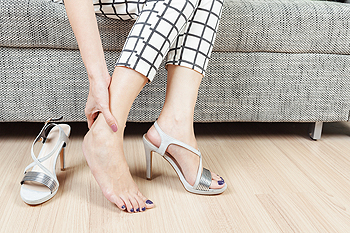 Wearing high heels is popular among many women. While they can positively enhance the appearance of the legs, they may cause uncomfortable foot conditions. It may be beneficial to frequently practice specific foot stretches in order to help diminish possible foot ailments from wearing high heels. An effective stretch consists of placing the fingers between the toes, while gently pulling down and strengthening the top of the foot. The bottom of the foot can become stronger when a towel is placed on the sole of the foot while lying down. You will feel a stretch as the leg is extended upward, and the towel is pulled toward the face. If you would like additional information about how to keep the feet healthy while wearing high heels, please consult with a podiatrist.
Wearing high heels is popular among many women. While they can positively enhance the appearance of the legs, they may cause uncomfortable foot conditions. It may be beneficial to frequently practice specific foot stretches in order to help diminish possible foot ailments from wearing high heels. An effective stretch consists of placing the fingers between the toes, while gently pulling down and strengthening the top of the foot. The bottom of the foot can become stronger when a towel is placed on the sole of the foot while lying down. You will feel a stretch as the leg is extended upward, and the towel is pulled toward the face. If you would like additional information about how to keep the feet healthy while wearing high heels, please consult with a podiatrist.
High heels have a history of causing foot and ankle problems. If you have any concerns about your feet or ankles, contact one of our podiatrists from New Tampa Foot & Ankle. Our doctors can provide the care you need to keep you pain-free and on your feet.
Effects of High Heels on the Feet
High heels are popular shoes among women because of their many styles and societal appeal. Despite this, high heels can still cause many health problems if worn too frequently.
Which Parts of My Body Will Be Affected by High Heels?
- Ankle Joints
- Achilles Tendon – May shorten and stiffen with prolonged wear
- Balls of the Feet
- Knees – Heels cause the knees to bend constantly, creating stress on them
- Back – They decrease the spine’s ability to absorb shock, which may lead to back pain. The vertebrae of the lower back may compress.
What Kinds of Foot Problems Can Develop from Wearing High Heels?
- Corns
- Calluses
- Hammertoe
- Bunions
- Morton’s Neuroma
- Plantar Fasciitis
How Can I Still Wear High Heels and Maintain Foot Health?
If you want to wear high heeled shoes, make sure that you are not wearing them every day, as this will help prevent long term physical problems. Try wearing thicker heels as opposed to stilettos to distribute weight more evenly across the feet. Always make sure you are wearing the proper shoes for the right occasion, such as sneakers for exercising. If you walk to work, try carrying your heels with you and changing into them once you arrive at work. Adding inserts to your heels can help cushion your feet and absorb shock. Full foot inserts or metatarsal pads are available.
If you have any questions please feel free to contact our office located in Wesley Chapel, FL . We offer the newest diagnostic and treatment technologies for all your foot and ankle needs.
Flat Feet May Affect Ankle Mobility
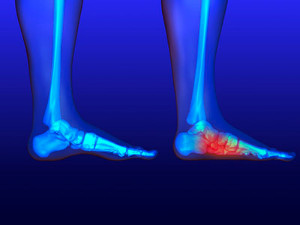 Patients who have little or no arch in their feet may have flat feet which is a condition that can occur due to genetics. Frequently practicing stretching techniques may help the feet to feel better. Many patients find that they experience pain due to their flat feet when they change the shoes that they wear or when their exercise volume and intensity has increased. Ankle dorsiflexion, the ability to point the ankle up while in a standing position, is generally affected with flat feet. There are specific stretches that can be implemented which may help to improve ankle movement. If you were born with or have developed flat feet and are dealing with foot pain, please schedule a consultation with a podiatrist who can determine the best treatment for you.
Patients who have little or no arch in their feet may have flat feet which is a condition that can occur due to genetics. Frequently practicing stretching techniques may help the feet to feel better. Many patients find that they experience pain due to their flat feet when they change the shoes that they wear or when their exercise volume and intensity has increased. Ankle dorsiflexion, the ability to point the ankle up while in a standing position, is generally affected with flat feet. There are specific stretches that can be implemented which may help to improve ankle movement. If you were born with or have developed flat feet and are dealing with foot pain, please schedule a consultation with a podiatrist who can determine the best treatment for you.
Flatfoot is a condition many people suffer from. If you have flat feet, contact one of our podiatrists from New Tampa Foot & Ankle. Our doctors will treat your foot and ankle needs.
What Are Flat Feet?
Flatfoot is a condition in which the arch of the foot is depressed and the sole of the foot is almost completely in contact with the ground. About 20-30% of the population generally has flat feet because their arches never formed during growth.
Conditions & Problems:
Having flat feet makes it difficult to run or walk because of the stress placed on the ankles.
Alignment – The general alignment of your legs can be disrupted, because the ankles move inward which can cause major discomfort.
Knees – If you have complications with your knees, flat feet can be a contributor to arthritis in that area.
Symptoms
- Pain around the heel or arch area
- Trouble standing on the tip toe
- Swelling around the inside of the ankle
- Flat look to one or both feet
- Having your shoes feel uneven when worn
Treatment
If you are experiencing pain and stress on the foot you may weaken the posterior tibial tendon, which runs around the inside of the ankle.
If you have any questions please feel free to contact our office located in Wesley Chapel, FL . We offer the newest diagnostic and treatment technologies for all your foot and ankle needs.
Flatfoot
Flatfoot is a foot disorder that is not as straightforward as many people believe. Various types of flatfoot exist, each with their own varying deformities and symptoms. The partial or total collapse of the arch, however, is a characteristic common to all types of flatfoot. Other signs of flatfoot include:
- “Toe drift,” or the pointing outward of the toes and the front part of the foot
- The tilting outward of the heel and the tilting inward of the ankle
- The lifting of the heel off the ground earlier when walking due to a tight Achilles tendon
- Hammertoes
- Bunions
One of the most common types of flatfoot is flexible flatfoot. This variation usually starts in childhood and progresses as one ages into adulthood. Flexible flatfoot presents as a foot that is flat when standing, or weight-bearing. When not standing, the arch returns. Symptoms of flexible flatfoot include:
- Pain located in the heel, arch, ankle, or along the outside of the foot
- Overpronation, or an ankle that rolls in
- Shin splint, or pain along the shin bone
- General foot aches or fatigue
- Pain located in the lower back, hip, or knee
Your podiatrist will most likely diagnose flatfoot by examining your feet when you stand and sit. X-rays may be taken to define the severity and help determine the treatment option best for your condition. Nonsurgical treatments can include activity modification, weight loss, orthotics, immobilization, medications, physical therapy, shoe modifications, and ankle foot orthoses (AFO) devices. If nonsurgical methods prove ineffective, surgery may be considered. Multiple surgical procedures can correct flatfoot; and depending on your specific condition, one may be selected alone or combined with other techniques to ensure optimal results.
Is Standing All Day Bad for Your Feet?
While it is true that standing for prolonged periods of time can burn more calories than sitting, there are also many foot and lower limb problems associated with prolonged standing. These can include blood pooling in the legs, leading to swelling and poor circulation, and foot and leg pain. Standing all day can also aggravate pre-existing foot conditions, such as bunions, corns, and calluses. If you must stand for long periods of time as part of your job, it is suggested that you sit down during breaks, gently stretch and massage the legs and feet, and apply ice to painful areas if pain becomes excessive. For more information about working on your feet, please consult with a podiatrist.
While working on the feet, it is important to take the proper care of them. For more information about working on your feet, contact one of our podiatrists from New Tampa Foot & Ankle. Our doctors will treat your foot and ankle needs.
Working on Your Feet
Standing on your feet for long periods of time can cause stress and pain in your feet. Your whole body may experience change in terms of posture, back pain, bunions, callouses and or plantar warts. There are ways to avoid these conditions with proper foot care, smart choices and correct posture.
Positive Changes
Negative heeled shoe – Choosing this shoe type places the heel slightly lower than the ball of the foot. These are great for overall foot health. Find shoes that fit you correctly.
Go barefoot – Our feet were not designed to be enclosed for all hours of the day. Try to periodically expose your feet to air.
Eliminate Pain
Foot Exercises – Performing simple exercises, incorporating yoga and doing stretches are beneficial. This will allow increased blood flow to the area and muscles of the foot.
Achilles tendon – Stretching the foot out flat on the floor will relax the calf muscles and tendon. These exercises can be performed almost anywhere. Make sure you add these exercises to your daily regimen.
With a little bit of this information and knowing more about foot health, you will notice changes. Foot stretches and proper footwear will help with pain and prevent further issues.
If you have any questions please feel free to contact our office located in Wesley Chapel, FL . We offer the newest diagnostic and treatment technologies for all your foot and ankle needs.

